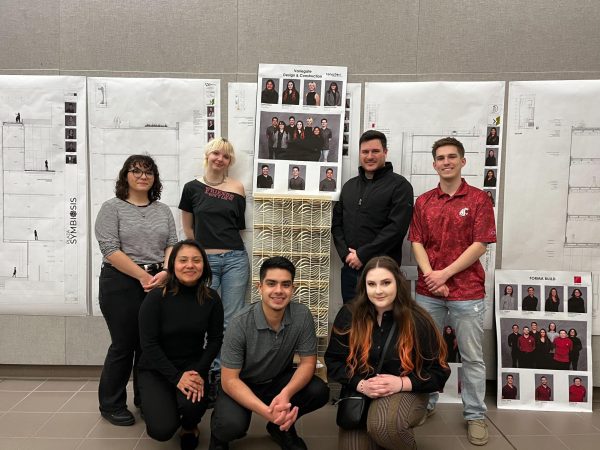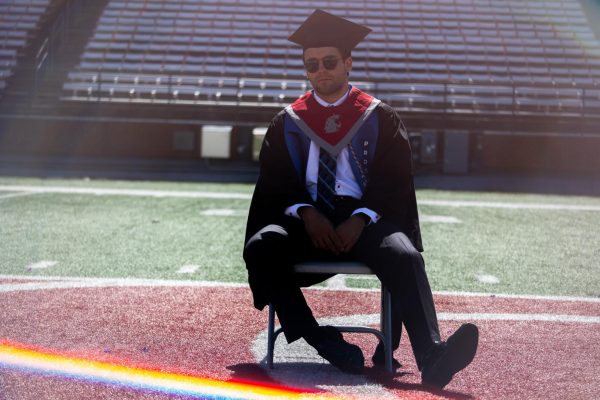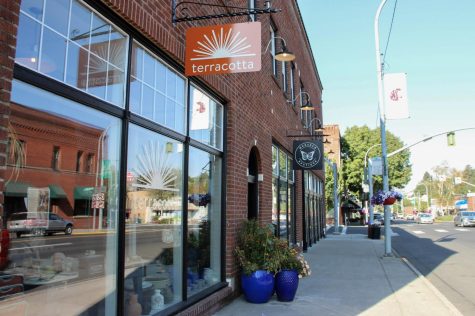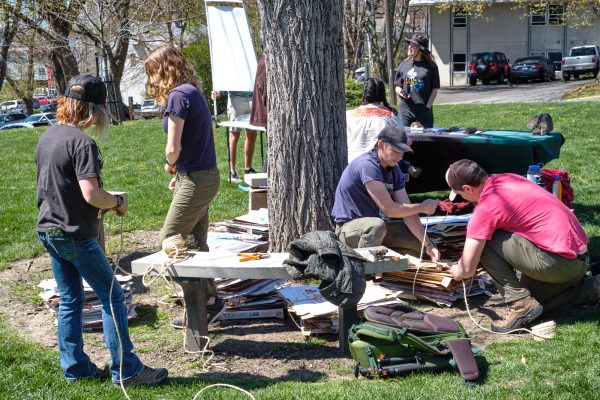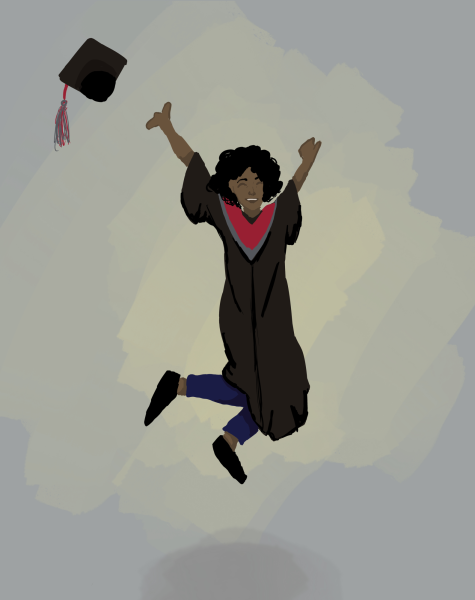Music and the brain
November 13, 2014
For one student, studying voice with a music professor led to an uncommon breakthrough in her college experience – discovering she tested positive for ADHD.
Creative activities aren’t just something people enjoy in their spare time. Music, art and even reading a good book can improve emotional health, and for some, they can be a gateway for identifying the root of the problem.
Senior music education major Anne McCaslin learned she has ADHD after working with her music professor Sheila Converse, who McCaslin said was the catalyst for getting tested.
“In high school my grades were fine,” McCaslin said, “but when I came to college and my grades started dropping, most of my teachers just thought I didn’t care enough.”
The jarring transition to college, with its rapid personal growth and changes, only heightened an issue that had been under the surface for years, she said.
“I wasn’t organized, and I couldn’t focus in class,” McCaslin said. “Dr. Converse was able to see through that. Somehow, she knew… there was a disconnect happening.”
Alternative therapy techniques, including music therapy, art therapy and bibliotherapy are just a few of the creative outlets that can improve emotional health and are used to help treat those who suffer from a range of mental illnesses.
“When you pair these with other kinds of therapy, it can enhance the effectiveness of all the treatments,” Converse said. “No treatment is as effective if you take one piece away.”
Converse earned a master’s in music therapy from NYU and has years of experience using these techniques with people of all ages. She believes music therapy is something we do without even realizing we’re helping ourselves.
“We put on our upbeat and happy tunes when we get up in the morning, when we work out, when we have to clean our apartment,” she said. “It helps to get us motivated.”
Music therapy is commonly used for depression treatment, she said. Singing and playing other instruments produces endorphins and changes the serotonin levels in the brain, which can help to reduce anxiety and even strengthen the immune system, she said.
“Music therapy is using music with an ulterior motive,” Converse said. “In patients with ADD, giving music lessons can increase impulse control and other skills, which in turn that patient can apply to the other areas of struggle whether it be school or work.”
McCaslin and Converse agreed that the stigmas of suffering from emotional or mental stress can affect student decisions to seek help, even in college where resources are readily available.
“There’s a kind of American stigma about getting help, like telling someone to just pull themselves up by their bootstraps,” Converse said. “You wouldn’t say that to someone with a broken leg. We need to encourage students to get help, and if you need to take medication, it’s OK.”
One resource that WSU doesn’t offer is far more widely known and used, McCaslin said. Art therapy uses abstract themes of color and shapes to encourage an outlet of emotional processing, said senior music and
sychology major Elle Fricks.
Fricks said her mom is an artist who loves using art therapy as an outreach for women who suffer from anorexia. For example, women were asked to draw what they thought their bodies looked like, Fricks said.
“Of course they drew themselves huge. Then they put them up next to what they had drawn and traced the real outline of their size,” Fricks said. “It was really powerful.”
Fricks said she believes art therapy should be more accessible at WSU, and that offering it could draw more students in to the school’s counseling services.
‘There’s always a stigma about going to therapy, like it’s going to be some Freudian ‘analyze me’ situation,” Fricks said. “If there were a clinic where they just gave everyone in the group some paint, think about how much more fun that would be, and it could be really helpful.”
Fricks said she believes suffering from mental illness is not the only reason for people to get therapeutically creative.
“If you’re going through a break up or whatever it is, take that darkness and make something beautiful,” Fricks said.
Fricks’ mother, young adult novelist Lorie Ann Grover, agreed that creative outlets can be the best medicine, especially when they’re not meant to be.
“You don’t have to approach something as therapy to benefit emotionally from it,” Grover said. “It’s all about filling up your creative pot, even if you’re not diagnosed with a clinical disorder. You should do it for your emotional well-being.”
Grover is currently involved in an outreach program in which she practices bibliotherapy with inner city high school students in Seattle, using her own work as a platform for confronting personal setbacks.
“I write novels for young adults that help them to process their own difficult situations. They are actual novels used in a nontraditional setting, sparking a conversation,” Grover said. “After we read a good book, we have a reaction. It urges us to do something.”
Grover said fellow author Dia Calhoun, who suffers from bipolar disorder, explores her own mental process through her novel “Phoenix Dance.” The novel refutes mental health stigmas and allows those who suffer from bipolar to identify and emotionally process through the character’s eyes.
“It acts as a gateway,” Grover said. “You might not even realize that something is wrong, and a book can help you identify it and start a dialogue, even if it’s just with a friend.”
Starting that dialogue was a defining moment for McCaslin. Through her passion for music and psychology, as well as her own profound experience, McCaslin said she decided to pursue music therapy as a graduate student.
“A lot of people say things like ‘I’m so ADD’ or ‘I’m so OCD.’ No, you’re not. It took that extra push for me, and it was a really amazing moment,” she said.
Whether it is a friend, a health care professional, or a voice teacher, starting that dialogue, and keeping those creative juices flowing can make a difference in the success of your college career, and the rest of your life, she said.








